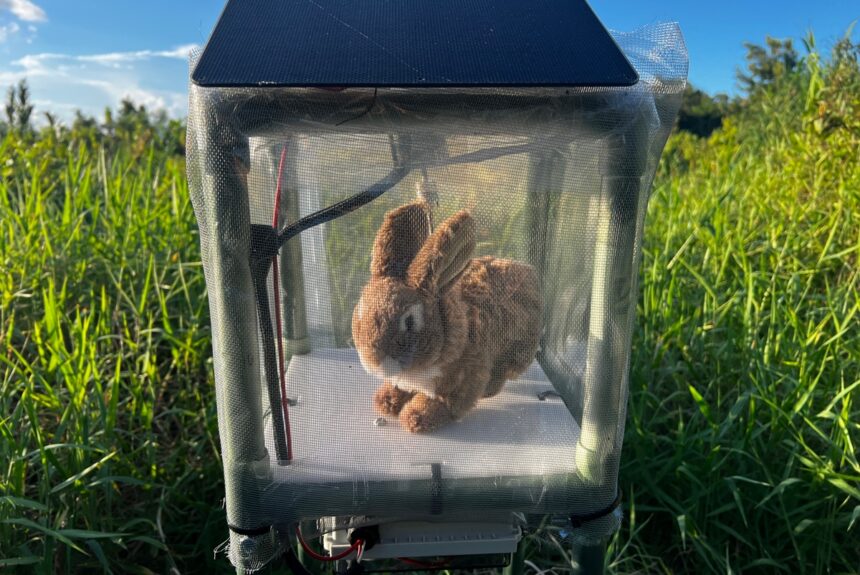Fed up with the overpopulation of Burmese pythons in Everglades National Park, Florida authorities began using robot rabbits that simulate the smell, body heat and movement of these animals to capture the elusive snakes.
“They are sort of animatronic rabbits, decoys that are placed in enclosures in the field. They are designed to mimic real rabbits, so they move, emit a thermal signal and even have a diffuser that sprays rabbit scent,” python program manager at the South Florida Water Management District, Mike Kirkland, told EFE.
Robot rabbits against python in Florida

The objective of this pilot project, which has only been in operation for two months and involves forty toy rabbits “that have been reconditioned with animatronics”, is to act as a lure to lure the pythons out of their hiding places.
However, the snakes cannot access the enclosure where the rabbits are kept, and once out in the open, they are trapped by humans and euthanized.
“We have cameras around these enclosures that work with artificial intelligence,” Kirkland said, noting that once they receive the signal, they call one of the contractors Florida employs to capture and remove the snakes.
Replacing real rabbits
Prior to the robots, authorities used real rabbits for four years to attract snakes, but the expert noted that “it takes a lot of time and resources to take care of live animals in the field every day.”
So they decided to use the animatronics, which are designed by the University of Florida and do not require daily care.
According to Kirkland, it is still early to evaluate the project, but if it proves to be a success, they will analyze how to extend it to more regions of the Everglades.
Florida authorities point to the Burmese python as one of the main culprits responsible for the drastic decline in the number of native mammals currently found in the Everglades Nature Park, a unique biodiversity jewel listed as a UNESCO World Heritage Site in 1979.
The U.S . Geological Survey (USGS) “conservatively” estimates the number of these snakes in the Everglades to be in the tens of thousands.
Pythons arrived as pets
The origin of this species in southeast Florida dates back to the last century, and the first sighting of a Burmese python in the National Park took place in 1979.
According to Tom Rahill, the founder of Swamp Apes, a non-profit organization that employs U.S. veterans to trap pythons, the snakes were introduced to Florida as pets.
But their owners, seeing that the animals were growing, gradually released them into the Everglades, without any control whatsoever.
“Pythons are prolific breeders. A 10-foot (3-meter) python may have 25 to 30 eggs.
“Of those eggs, 90-95% hatch,” Rahill explained, noting that as the snake increases in size it is able to lay more eggs.
The number of pythons has increased to such an extent that it has caused the populations of some small and medium-sized mammal species to be reduced by up to 90%, according to scientific studies cited by state authorities.
Workshops, prizes and other incentives to capture them
Prior to the robot rabbit program against pythons in Florida, the state has devised all sorts of initiatives to curb the disproportionate increase in the population of this snake.
Apart from the contractors it employs, whose fees increase according to the size of the python caught, it also promotes its capture by the general public without the need for a hunting permit.
It even offers free and unlimited virtual workshops for volunteers who wish to join the ‘Python Patrol’, where they learn from a biologist the technique to search for and capture Burmese pythons.
In addition, each year it holds the Florida Python Challenge, in which it awards prizes to those participants who catch the greatest number of snakes during the ten-day competition.
In the last edition, held last July, 934 people registered and withdrew more than 294 pitons.
Before the robots, authorities used real rabbits for four years to attract snakes
QuéOnnda.com























